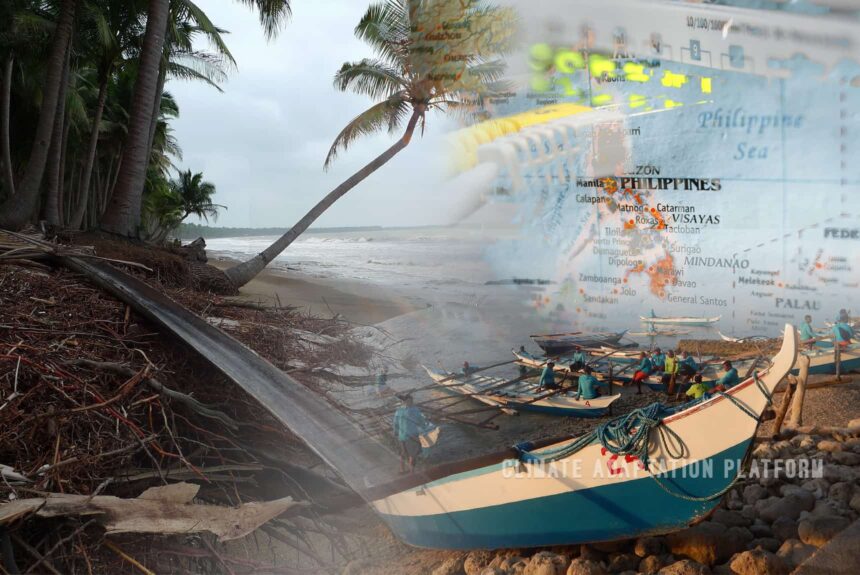The Philippines’ vulnerability and exposure to multiple disasters triggered by natural events are well-known and documented. Around 60% of its land area and 74% of its 113 million population is exposed to natural hazards like floods, cyclones, landslides, droughts, volcanic eruptions, earthquakes, and tsunamis (Philippines, 2021).
The Pacific Disaster Center’s (PDC Global) data on the Philippines Disaster Risk Profile shows that the country has high scores in both multi-hazard risk (0.61) and multi-hazard exposure score (.84). For vulnerability (0.41), coping capacity (0.52), and resilience (0.56) it has moderate scores.
Regarding what hazard the country’s population and capital are highly exposed to, it is earthquakes (92.10%), floods (92.10%), Tropical Cyclones (79.30%), and volcanos (65.79%).
Except for volcanic eruptions and earthquakes, multiple natural hazards are projected to increase in frequency and severity due to climate change. Every natural disaster leaves the country with billions in economic losses from infrastructure, business, and property damages.
The country’s high exposure and risk to natural disasters require it to strengthen its emergency and disaster response, especially in responding to the needs of its most vulnerable population.
Food and cash assistance to highly affected populations is critical during large-scale shocks. However, distributing it efficiently and speedily poses a huge challenge, especially in developing countries like the Philippines.
A case study from the World Food Programme demonstrates how a digital solution has helped the Philippines improve its disaster response and social protection. In 2018, the country’s Department of Social Welfare and Development invited the WFP to improve the Government’s beneficiary data management and enhance its social protection delivery systems.
WFP used SCOPE, a cloud-based beneficiary identity management system around the world.
“SCOPE is a flexible and powerful digital tool that enables WFP to store and manage beneficiary information and ensure its assistance is as effective as possible. Once this information is in the system, WFP is able to generate payment lists and distribute assistance immediately. SCOPE informs WFP who the relevant beneficiaries are for a particular programme, what they are entitled to, and whether they have received the correct assistance, among other services. The tool also has offline registration capabilities that allow the registration of beneficiaries in remote locations and their inclusion in assistance programmes.”
The country’s Department of Social Welfare and Development (DSWD) is responsible for maintaining the Government’s beneficiary database system and dispersing cash assistance to them.
Through the partnership with and support from the WFP, the DSWD could use the cloud-based software to implement various government assistance programmes. First, in 2018 when Typhoon Mangkhut hit during the eruption of the Taal Volcano in January 2020, and to distribute the Government’s Social Amelioration Program for COVID-19 aid in the same year, and several other emergency operations that followed.
Thousands of profiles have also been added to SCOPE, and hundreds of thousands of beneficiaries and households have received food and cash assistance in the aftermath of disasters through this digital solution.
However, challenges remain to ensure that the country continues to improve its disaster response and social protection programmes, and this is contingent on IT equipment, related infrastructure, and predictable funding. Recognising these limitations, the Philippine Development Plan (2023–2028) includes investments in resilience, social protection programmes, research and development, digital technology, and innovation as part of its plan for economic transformation.
The case study is an example of the transfer of technologies can improve a country’s disaster response and strengthen its resilience against natural disasters.
Developing and transferring technologies to support developing countries to adapt and become more resilient to natural disasters and the increasing climate change effects has been one of the essential elements pushed by the UNFCC.
Sources:
Philippines (2021). World Bank Group. Retrieved from https://climateknowledgeportal.worldbank.org/country/philippines/vulnerability
Volcanoes, Typhoons and Pandemics: Digital Solutions Improve Disaster Response and Social Protection in the Philippines. (2023). Word Food Programme. Retrieved from https://docs.wfp.org/api/documents/WFP0000148150/download/?_ga=2.87146334.757075210.1681202735-99406571.1664895380
Philippines Disaster Risk Profile. (2023). PDC. Retrieved from https://www.pdc.org/big-data/philippines/



Leave a Reply